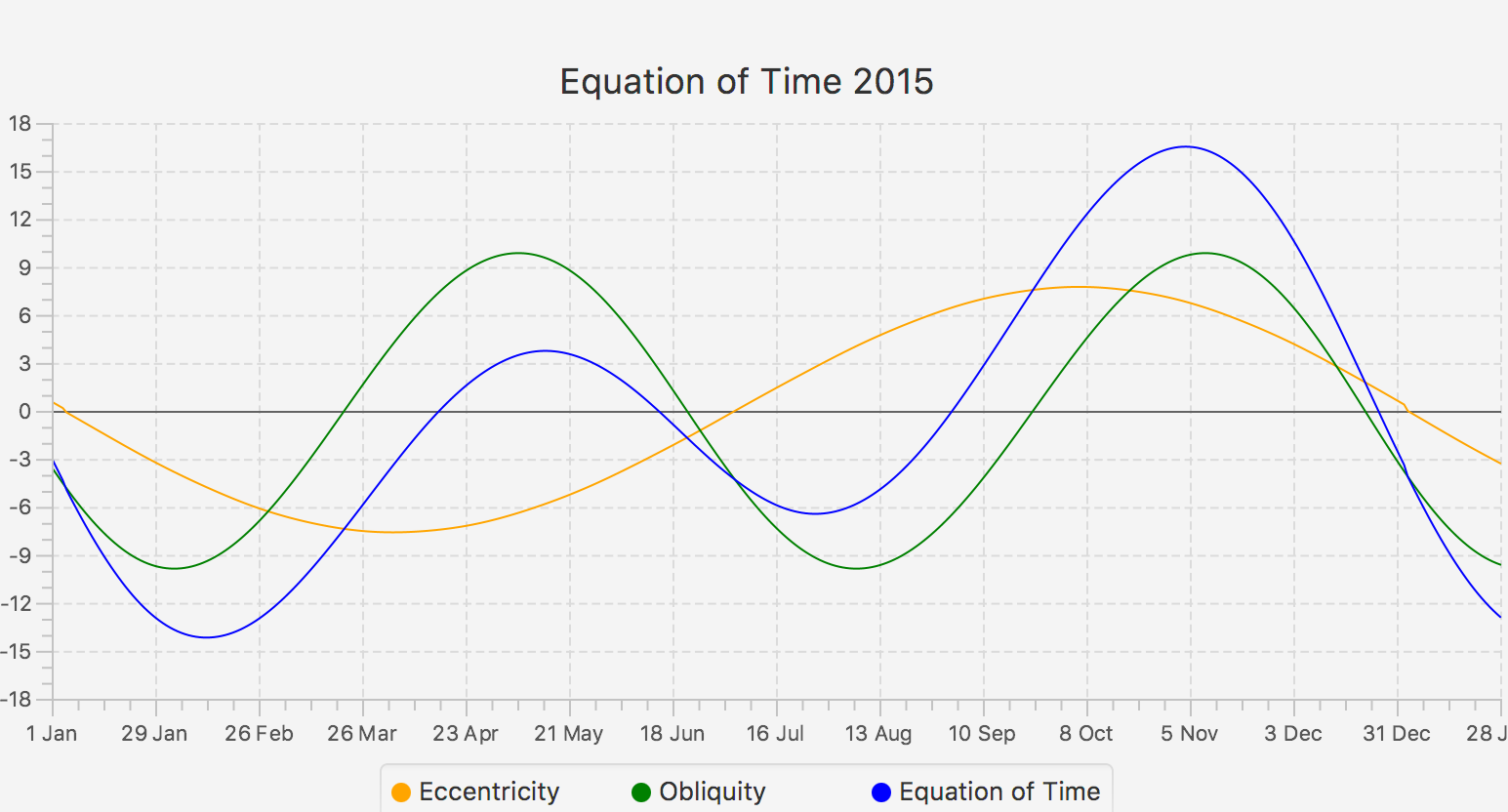How does the wobble of the earth's axis affect day length?
1 Answer
Changes in the axial tilt affect day length as a component of the Equation of Time.
Explanation:
Early measurements of the length of the day used sundials to measure the time between consecutive noons.
With the invention of the clock, the day became fixed at 24 hours. People soon realised that the solar day and the clock 24 hour day were different. In fact the solar day length varies continuously over the year and it is only 24 hours on 4 days per year.
Calculations were made to determine the difference between solar day and a 24 hour day and correction tables were added to sundials.
The difference between solar and 24 hour clock days is defined by the Equation of Time which is the blue line on the graph. Solar day can differ from a 24 hour day by up to 18 minutes which happens in November.

The Equation of Time has two components. The first component is due to the Earth's orbit being elliptical rather than circular. It has zeros at perihelion in January and at aphelion in July. It is the orange line on the graph which can contribute up to
The second component is due to the Earth's axial tilt. It has zeros at the equinoxes and solstices. It is the green line on the graph. It contributes up to
The Earth's axis of tilt is continuously changing due to precession effects. The greater the angle of tilt the greater the effect on the Equation of Time.

